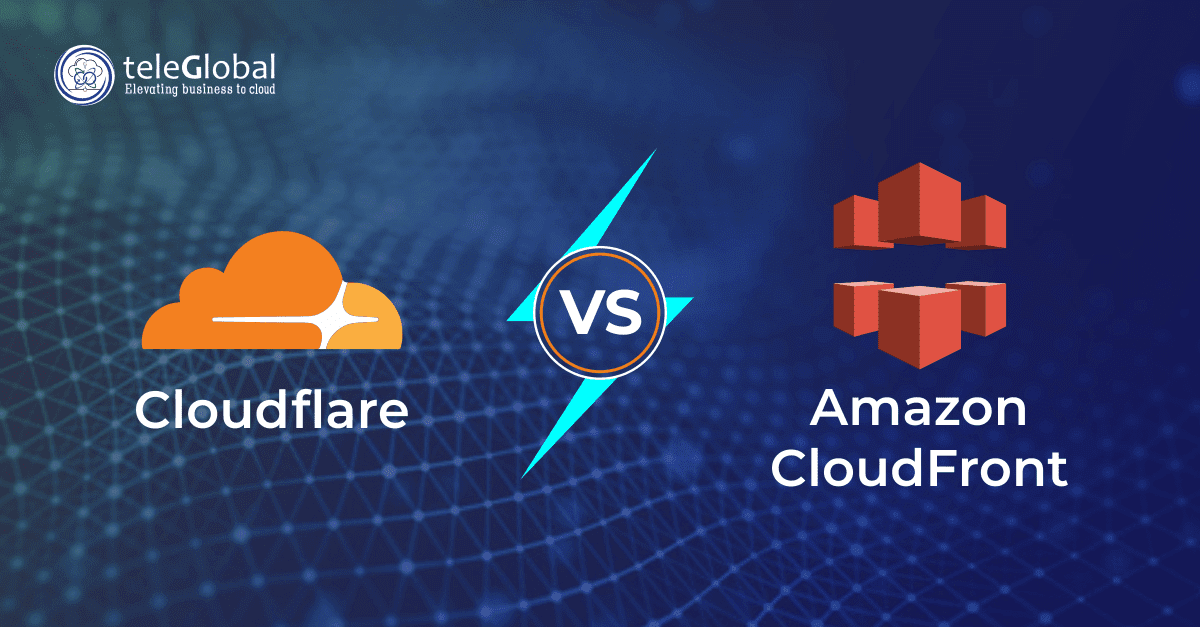
The battle for CDN dominion. Cloudflare vs Cloudfront
Cloudflare or CloudFront: Which one suits you better?Every time you read a news article like this one, access an eCommerce portal or make a transaction, say on the stock market, you’re probably using CDN technology. CDNs are a vital part of the internet today. They comprise a global network of servers that speed up content delivery by caching web content close to the geographical location of anyone browsing the internet. Cloudflare and Amazon CloudFront are the two biggest CDN providers, but they are different in many ways.
The Benefits of CDN technologyFaster content loading i.e. improved browsing experience. Enables websites to handle large peak traffic volumes efficiently Provides alternative routes for content delivery, which ensures the business’s online presence Combats Distributed Denial of Service (DDoS) cyber attacks Enables scaling on demand—a boon that allows smaller websites to avoid response failure by increasing bandwidth in response to high traffic volume Offers cost savings through SaaS models
Cloudflare vs Amazon CloudFront (Features, capabilities, and benefits)Cloudflare acts as a reverse proxy—it is located in front of backend apps, from where it directs client requests to the applications thereby ensuring smooth traffic in the network. Reverse proxies improve scalability and performance, as well as, security.
Cloudflare was launched in 2007 to help websites reduce loads on local servers thus improving performance and providing better security. FeaturesCloudflare is a global CDN, i.e. its services are distributed globally. These services include DNS service, and higher security and encryption.
DNS Service Cloudflare servers are located in 250 cities across 100 countries. They can be used to cache static and/or dynamic content closer to users’ locations. Its high-speed network can reach 95 percent of the world’s population in a matter of milliseconds. DDoS and Attack ProtectionCloudflare provides formidable DDoS protection. On average it blocks 86 billion threats each day.
SSL/TLS EncryptionCloudflare provides SSL encryption at no cost. Thus, all traffic passing through its servers is protected from data theft and tampering through encryption.
Rate Limiting Cloudflare uses rate-limiting to protect from web attacks like DDoS ( multiple requests coming from various IPs), brute-force (many login attempts), credential stuffing (reusing credentials harvested from previous attacks on other sites, in the hope that the same set of log-ins and passwords have been used by a user for multiple sites) any cyberattack targeting web APIs and applications. Load BalancingThanks to the many geographical locations of its servers, Cloudflare can dynamically choose the fastest servers and least congested Internet routes to deliver content to end-users, thereby enabling superior browsing experiences.
API ProtectionCloudflare uses an API Shield to keep APIs secure. Cloudflare has taken an all-in-one approach that lets you set up easily and use a wide array of services. On the flip side, if you need more control over which tools and services you use, this could put you at a disadvantage.
Amazon CloudFrontUnlike Cloudflare, which takes an all-in-one approach, Amazon CloudFront only on provides a global CDN. In other words delivering web apps/assets as quickly as possible.
If you only need a CDN service, Amazon CloudFront is the ideal option—this is especially true for businesses that are already using AWS apps and services.
FeaturesAmong Amazon CloudFront’s more impressive features are cooperation with major global telecom operations, customizable security compliance, and secure edge computing.
Global Edge NetworkThrough partnership agreements with Tier 1, 2, and 3 telecom carriers globally, Amazon CloudFront offers a global network that spreads across more than 90 cities and 47 countries and comprises 310+ points of presence.
Security Amazon CloudFront offers protection against network- and application-layer attacks through AWS Shield, AWS Web Application Firewall (WAF), and Amazon Route 53.CloudFront provides SSL/TLS encryptions and HTTPS.In addition, compliance with regulatory bodies, such as PCI DSS Level 1, HIPAA, and SOC 1, 2, and 3, Amazon CloudFront provides access controls that prevent users in specific countries from accessing CloudFront websites/applications.
AvailabilityAmazon CloudFront uses Amazon CloudFront Origin Shield to store cached content in different locations, fetching content from origin only when needed. If the primary origin isn’t available, Amazon CloudFront fetches the requested contents from the backup origin.
Edge ComputingCloudFront Functions and AWS Lambda@Edge enable secure edge-CDN computing for CloudFront.
Cost-EffectivenessAmazon CloudFront provides numerous payment options, including pay-as-you-go (without an upfront fee), Amazon CloudFront security savings bundle, and custom pricing.
In addition, Amazon Cloudflare doesn’t charge for origin fetches between AWS cloud services and Amazon CloudFront.
ConclusionThere are many differences between Cloudflare and CloudFront, starting from their origins themselves. Cloudflare was developed for protection against DDoS attacks and Web Application Firewall (WAF) whereas CloudFront is focused on speeding up load time.
Their technical components and processes too differ: Cloudflare is a reverse proxy. It caches content in servers close to end-users, whereas Amazon CloudFront stores cached content on Amazon S3 buckets. Even their delivery methods differ: Cloudflare uses multiplexing; Amazon CloudFront, and level 3 cache headers.
Finally, Cloudflare’s CDN infrastructure is much bigger than Amazon CloudFront CDN network.
Need a hand with CDN services? As AWS Advanced Partners and AWS Managed Services Providers, Teleglobal has the experience and native understanding of Cloud Managed Services to help you take your content delivery to the next level.







































